- Abstract
- Harvest volume of early Unshu mandarins, including very early mandarin oranges (main data).
- Harvest volume of early Unshu mandarins, including very early mandarin oranges (by prefecture).
- Bearing tree area of early-ripening Unshu mandarins, including extremely early-ripening mandarins (main data).
- The area of bearing trees of early-ripening Unshu mandarins, including extremely early-ripening mandarins (by prefecture).
- Shipping volume of early Unshu mandarins, including very early mandarins.
- Reference
Abstract
In the cultivation of mandarins in Japan, early-ripening Unshu varieties, especially the very early-ripening varieties, are attracting a lot of attention. According to data for 2022, the national harvest volume was up to 110kt, the fruiting tree area was up to 5.71kha, and Wakayama had the highest shipping volume of 18.5kt. These figures show that mandarin orange cultivation is an important industry nationwide, with Wakayama in particular leading the way in terms of shipping volume. Additionally, the expansion of the fruiting tree area and the increase in harvest yield suggest that mandarin orange cultivation is improving productivity and meeting demand. Past trends include the development of production systems to meet demand and improved productivity through technological innovation. It is expected that mandarin orange cultivation will continue to grow sustainably in the future, while adapting to changes in demand and fluctuating climatic conditions.
Harvest volume of early Unshu mandarins, including very early mandarin oranges (main data).
The harvest volume of early-ripening Unshu mandarins, including extremely early-ripening mandarins, in Japan has fluctuated between 1991 and 2022. In 2000, the peak harvest volume nationwide was 214kt, but since then it has been on a downward trend and is currently at 51.4% of the peak. The reasons behind this decline include a decrease in farmland and a labor shortage. Also affecting them are changes in demand for other fruits and vegetables and fluctuating weather conditions. On the other hand, technological innovation and improvements in agricultural policies are leading to more efficient cultivation methods and improved quality. In the future, it will be necessary to build a sustainable production system that can respond to changes in demand and environmental issues.
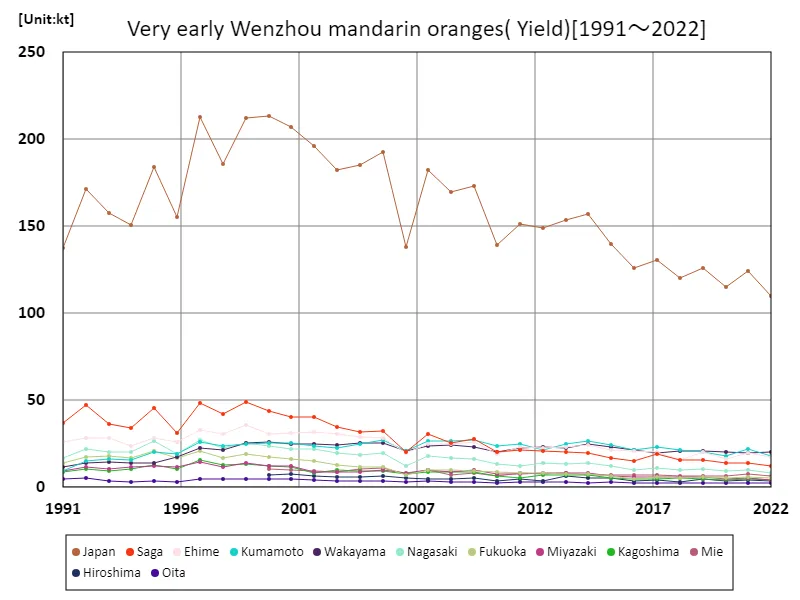

The maximum is 214kt[2000] of Japan, and the current value is about 51.4%
Harvest volume of early Unshu mandarins, including very early mandarin oranges (by prefecture).
According to the latest data for 2022, Wakayama recorded the highest mandarin orange harvest in Japan at 20kt overall, with the current yield being the highest ever. Past trends show that mandarin orange cultivation is thriving in several regions, including Wakayama, and harvest yields are relatively high. This is influenced by climatic conditions, soil suitability, and the high level of technical skill of farmers. Furthermore, mandarin oranges are widely loved both in Japan and abroad, and high demand has also contributed to increased harvests. On the other hand, there are challenges such as competition with other fruits and vegetables and labor shortages. In the future, it will be necessary to promote sustainable mandarin cultivation while being influenced by changes in demand and climate change.
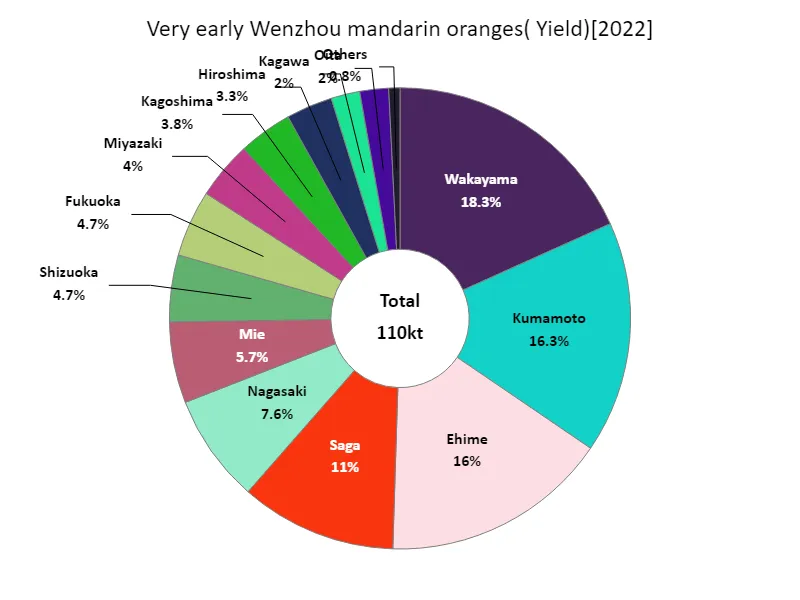

The maximum is 20kt of Wakayama, the average is 6.44kt, and the total is 110kt
Bearing tree area of early-ripening Unshu mandarins, including extremely early-ripening mandarins (main data).
The area of bearing trees of early-ripening Unshu, including extremely early-ripening mandarin oranges, in Japan has fluctuated from 1991 to 2022. In 2000, the country recorded a peak of 9.95kha, but since then it has been on a downward trend and is currently at 57.4% of its peak. The reasons for this decline include urbanization of farmland and conversion to alternative crops. In addition, the aging of farmers and a lack of successors are also contributing to the decrease in the area of fruiting trees. On the other hand, due to the introduction of efficient cultivation techniques and improvements in agricultural policies, an increase in the area of fruit-bearing trees has been observed in some regions. In the future, it will be necessary to promote sustainable agriculture and train young farmers, and efforts to stabilize and increase the area of fruiting trees will be required.
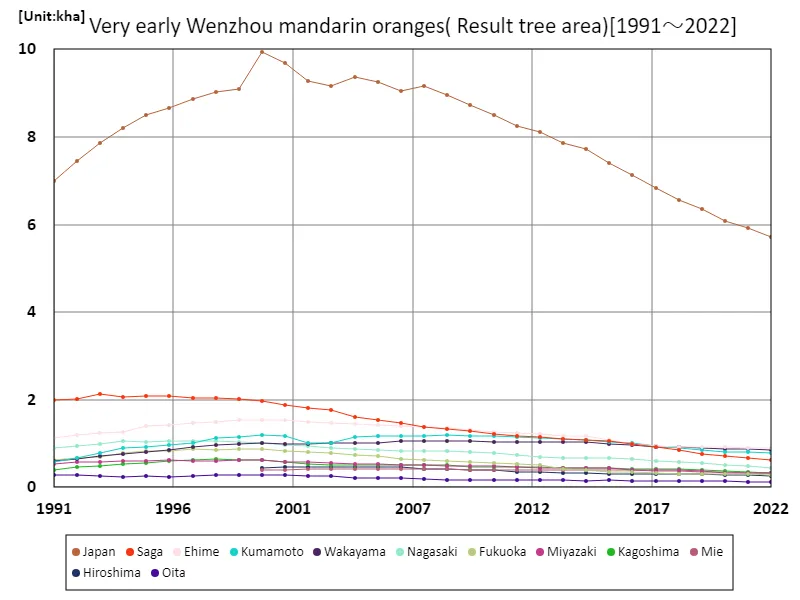

The maximum is 9.95kha[2000] of Japan, and the current value is about 57.4%
The area of bearing trees of early-ripening Unshu mandarins, including extremely early-ripening mandarins (by prefecture).
According to the latest data from 2022, Ehime recorded the largest area of fruiting mandarin trees in Japan at 891 hectares, the current value being the highest on record. A trend to date is that several regions, including Ehime, are major mandarin producing areas and have relatively large areas of fruiting trees. Ehime mandarin oranges are of high quality and are highly regarded both at home and abroad. Mandarin orange cultivation is also popular in other prefectures, and the area of fruiting trees is spreading nationwide. This is influenced by climatic conditions, soil suitability, and the high level of technical skill of farmers. On the other hand, urbanization of farmland and conversion to alternative crops have led to a decrease in the area of fruiting trees in some areas. In the future, it will be necessary to promote sustainable mandarin cultivation while being influenced by changes in demand and climate change.
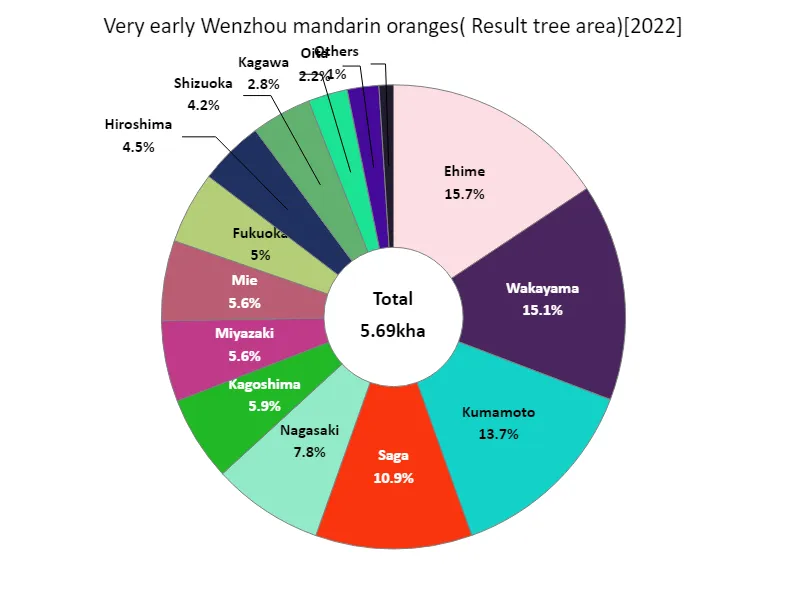

The maximum is 891ha of Ehime, the average is 334ha, and the total is 5.69kha
Shipping volume of early Unshu mandarins, including very early mandarins.
According to the latest data for 2022, Wakayama recorded the highest overall shipment volume of 18.5kt, including extremely early mandarin oranges, in Japan, with the overall average being 5.92kt, for a total shipment volume of 101kt. A notable feature so far has been that mandarin orange cultivation and shipping volumes have been thriving in some areas, including Wakayama. Wakayama has a particularly large shipping volume and is highly regarded for its high quality. On the other hand, mandarin oranges are also being shipped from other regions, with the overall average shipping volume being 5.92kt. These figures show that mandarin orange cultivation has spread throughout the country and that shipments are being made according to demand. In addition, the total shipping volume of 101kt shows that mandarins are a fruit that is widely loved both in and outside of Japan. In the future, it will be necessary to improve the quality of mandarin oranges and establish a sustainable shipping system while responding to changes in demand and fluctuating weather conditions.
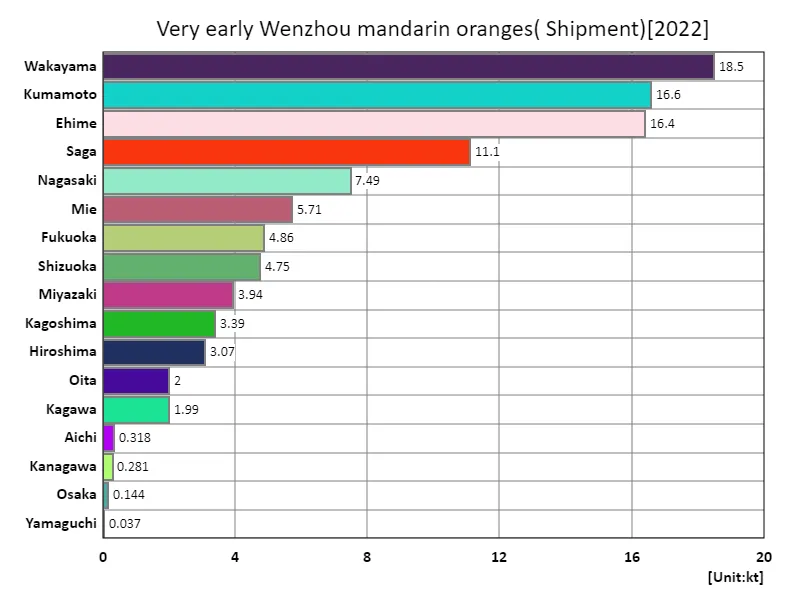

The maximum is 18.5kt of Wakayama, the average is 5.92kt, and the total is 101kt
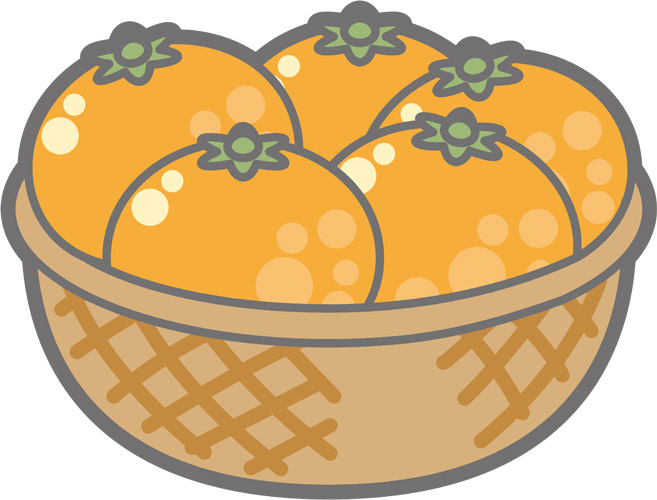


Comments